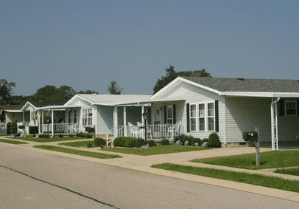Home insurance carriers offer a wide variety of policy forms and products. It may be tempting to select your carrier based on size or name, but those factors are not necessarily indicative of a better product offering. You need to evaluate all of the coverage each carrier is offering and determine what makes the most sense for you.
You should work with a trusted, licensed professional to determine which plan will suit you best, as insurance rules and regulations vary by state. But here is a general overview of some key terms and plans to help you be prepared for your consultation:
Types of ISO Forms & Coverage
When developing their policies, insurance carriers often use Insurance Service Office (ISO) forms. ISO is a private corporation that provides products and services for the insurance industry, primarily producing standardized insurance policy contracts. Even if insurance carriers do not use ISO forms verbatim, they often rely on ISO to develop definitions for policy terms such as what constitutes an “insured” or “residence” in an insurance contract.
Your options will depend on the type of home you are insuring. Here’s a breakdown of what ISO offers:
General Homeowners (ISO HO-3: Homeowner Form):
- Coverage A (Dwelling): This is calculated as full replacement cost of the entire home structure from the ground up, but the association provides no coverage. Common walls are covered 50/50 by each respective owner’s insurance. The association may coordinate roof shingle replacement (each unit owner’s insurance covers the square footage of the roof for the respective unit.) Coverage provided on Open Perils Form (all direct physical loss except for excluded perils)
- Coverage B (Other Structures): Covers detached structures, such as a detached garage or shed. Default is 10% of Coverage A’s limit.
- Coverage C (Personal Property): Covers the contents of the home – furniture, décor, electronics, clothes, toiletries, food, dishes, etc. Coverage is provided on a Named Perils Form (coverage is only provided for listed perils). Default is 50% – 75% of Coverage A’s limit.
- Coverage D (Loss of Use): Covers living expenses such as the cost of a rental home while your home is being repaired after a covered claim. The default is 20% – 40% of Coverage A’s limit.
- Coverage E (Personal Liability): Covers liability claims, such as if a guest is injured on your property or you cause damage to a neighbor’s unit. The insured must be legally negligent for coverage to apply. Intentional acts are not covered. This usually provides coverage between $100,000 – $500,000 per occurrence.
- Coverage F (Medical Payments): Covers small medical bills for guests regardless of negligence. This usually provides coverage between $1,000 – $5,000 per person. Coverage E picks up after Coverage F is exhausted if the owner is legally negligent.
Condos (ISO HO-6: Condo or Unit Owners Form):
- Coverage A (Dwelling/Unit): Coverage limit is selected by client. Mortgage lenders require at least 20% of loan amount although this amount is often not sufficient to completely rebuild the inside of the unit. The recommended limit is $75 – $125 per square foot depending on quality of interior. The association is responsible for the building’s exterior such as framing, siding/brick, roof, foundation, and public utility connections. Drywall, rough plumbing, electrical, windows/exterior doors may be covered by the association or may be the responsibility of unit owner, depending on how association’s bylaws are written. The unit owner is responsible for interior walls/doors, in-unit wiring/plumbing, flooring, cabinetry, plumbing and electrical fixtures, appliances, paint, trim, and HVAC systems. Coverage is provided on a Named Perils Form unless Open Perils Form endorsement is added.
- Coverage B (Other Structures): Coverage may or may not be provided depending on necessity.
- Coverage C (Personal Property): Coverage limit selected by insured. Covers the same items as HO-3. Named Perils Form.
- Coverage D (Loss of Use): Default is 20% – 40% of Coverage C’s limit. Covers the same items as HO-3.
- Coverage E (Personal Liability): Same as HO-3.
- Coverage F (Medical Payments): Same as HO-3.
Townhomes
- There is not a specific townhouse form. How your townhome needs to be insured depends on if your association has a “master insurance policy” that covers the exterior of the building for physical damage.
The Difference Between Open Peril and Named Peril Forms
Open Peril is a more comprehensive coverage form, meaning it covers more types of causes of damage. Coverage is provided for direct physical loss unless there is a listed exclusion in the policy.
Named Peril is more restrictive, as it only provides coverage for specifically listed causes of damage. If the exact cause of damage is not listed, the policy provides no coverage.
For example, if a meteorite falls from the sky, goes through your roof and damages your kitchen table, the roof and structural elements of your home would be covered under a standard HO-3 policy. Dwelling coverage (Coverage A) provides coverage under an Open Peril Form where there is no exclusion for meteorite damage. However, the kitchen table would not be covered, because Personal Property coverage (Coverage C) is provided under a Named Peril Form. Since meteorite damage is not one of the listed perils that are covered, no coverage is provided.
Some insurance carriers offer products where both the Dwelling Coverage and Personal Property Coverage are provided under an Open Peril Form. Open Peril can also be referred to as “Special Peril” or “Special Coverage Form.”
Additional Types of Coverage to Consider
The following areas are important, and we recommend discussing in more detail with your insurance professional:
- Loss Assessment Coverage: Covers association assessments for damage or loss to a common area.
- Water, Sewer & Sump Pump Back-Up/Overflow Coverage: Covers water damage that originates from a sump pump, internal sewer, or internal drain (sinks, toilets, bathtubs, etc.). This is a common claim that is not often covered by a base home policy without adding a coverage endorsement. Coverage also includes the cost of professional water mitigation and clean-up.
- Ordinance or Law Coverage: Covers additional costs to bring home construction to current building codes when the home is repaired after a covered loss. Also covers costs to demolish/rebuild undamaged portions of the home when such demolition is required by building code. Most base HO-3 policies only provide 10 percent of the Dwelling Coverage Limit. Based on local building codes, it is strongly recommended to increase this coverage to at least 50 percent of the Dwelling Coverage Limit.
Are you trying to determine what kind of home insurance plan is the right fit for you? Reach out and schedule a meeting with a Horton insurance professional today.
Material posted on this website is for informational purposes only and does not constitute a legal opinion or medical advice. Contact your legal representative or medical professional for information specific to your legal or medical needs.



